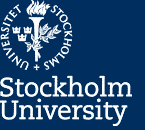The months following the autumn meeting have been filled with intense work. Initally with the university’s input to the research policy bill, and more recently with the annual budget proposal that is to be handed in to the Ministry of Education and Research. Tasks have also included written response to the Swedish Research Council’s FOCUS-proposals as well as the wait for a new quality assurance system, where the outcome of the parliamentary discussion is still uncertain. The campus Albano construction start means that we have entered a new phase of intense work to get the lease in place, to plan the design of the premises in detail as well as working for a good public transport solution within the so called Stockholm Science City, a matter that Peter Gudmundson President of KTH Royal Institute of Technolog,y and myself have written a polemical article on. At the same time, my colleagues at the higher education institutions of Stockholm and I have raised a discussion on Akademiska Hus and their rents. Market rents, which Akademiska hus applies, are difficult to handle for the higher education institutions in Stockholm.
The ongoing crisis at Karolinska Institutet and Karolinska University Hospital leaves no one indifferent and raises the question of research misconduct, central to every university. At Stockholm University we have a Board for Research Ethics under the chairmanship of the Deputy Vice-Chancellors. There are ongoing discussions with the Research Liaison Office on reinforcing its powers, for instance in connection to research project applications where ethical examination is required. Above all, we welcome national measures, something that Margareta Fahlgren currently investigates on behalf of the government.
At the department head meetings its chairperson, the Pro Vice-Chancellor, together with the Head of Human Resources, present the Stockholm University Council for Work Environment and Equal Rights. This council began its work last autumn and is now the hub for all questions regarding work environment, equal opportunities and equal treatment. Its structure is simple and stable with sub-groups for different issues, and it has a solid ground in local groups at the departmental and office level.
The main topic on the agenda of the spring meetings this year is however the Public Inquiry on Higher Education Management. The University Board will, in its response to the Government Offices, only comment on the suggestions which are addressed directly to the Government in the inquiry by its author. The suggestions concern the system of financing undergraduate and advanced level education, direct government funding of research and postgraduate studies, the confidentiality of Vice-Chancellor recruitment and the conditions of departing vice-chancellors. Other proposals in the public report – and they are extensive – are directed directly to the higher education institutions. These proposals range from a clarification of responsibility and authority to organizational decisions, but there are also tangible proposals to support academic leaders at different levels. The public inquiry is very thorough and includes food for thoughts and discussions. We want to use this in a constructive way in our efforts to develop the management and governance of Stockholm University.


